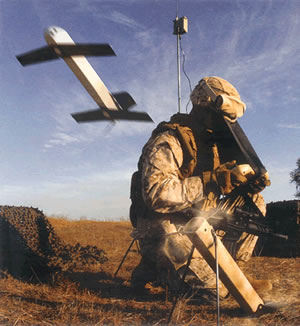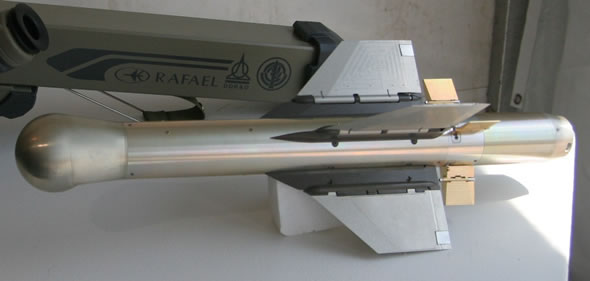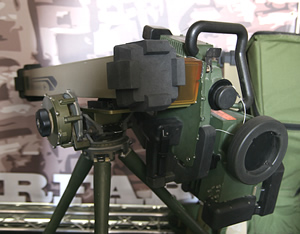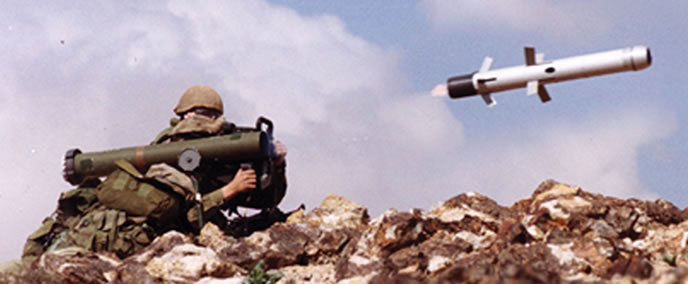Above: The Israeli Spike MR is an advanced ‘fire and forget’ electro-optically (EO) guided anti-tank missile. A family of missiles based on the Spike developed by Rafael now offrers multi-mission capability with specific variants designed to engage different types of targets, at longer or shorter ranges, with pinpoint accuracy. Photo: Rafael

Electro-optical (EO) guidance has sofar been considered an effective yet costly option for weapon guidance, therefore it was reserved only for more expensive weapons reserved for special missions.
Several examples are demonstrating potential uses of modern off-the shelf EO sensors for guidance systems. Low cost strapdown EO sensors have been used in small weapons for a while, the lightweight Spike missile developed by the U.S. Navy Weapons Division of the Naval Air Warfare Center, Weapons Division (NAWCWD) uses such sensor to guide the missile through ‘fire and forget’ engagement. Another Spike – unrelated to the U.S. version is the new Spike SR ‘fire and forget’ missile – the newest member of Rafael’s Spike family. The missile uses a strapdown imaging camera that acts both as a sight and target seeker. The camera does not require mechanical stabilization as it uses ultra-rapid image processing to provides the steering control.
Another miniature weapon making use of low-cost EO sensors is the Switchblade, (shown in the photo above left) a miniature loitering anati-personnel precision weapon developed by Aerovironment for the U.S. Special Operations Command. The weapon uses strapdown EO camera commonly used for low-level ISR missions to acquire and pursue the target from an altitude of over 100 meters.
A different missile developed at Rafael is the Mini-Spike. This weapon employs ‘fire and update’ guidance method, offering ‘man in the loop’ control throughout the engagement for maximum precision, while minimizing the risk of collateral damage. The gimballed EO sensor used for the Mini Spike enables this miniature missile to fly through complex trajectories, offering all the advances of the Spike LR missile at infantry combat ranges (about 1.3 km) for about a third of the weight, and cost.

But state-of-the-art commercial off the shelf technology opens new capabilities for EO seekers. Dual-mode guidance utilizing imaging sensor as laser seekers has the potential to revolutionize laser guidance, by introducing low cost, light-weight yet highly accurate means for target acquisition and weapon guidance. Current laser designators employ pulse lasers to generate high-power laser beams.
Combining affordable EO guidance with laser seeking techniques can provide even better performance and, more importantly, supperior coordination between ‘shooters’ and the supported echelon. A new type of laser designator is employing low-power laser diodes to generate Continuous Wave (CW) beams, operating at relatively low power levels and available for much lower cost.
The new method, patented by an Israeli start-up company Shilat Optronics employs ultra-small components that can be used at the lower echelon, for target acquisition and designation. On the weapon’s end, enhanced imaging sensors are used instead of the standard four quadrant laser detectors. These cameras are modified to detect and identify targets marked by specific CW or pulsed lasers. Employing variable gain to compensate for over exposure to specific frequencies, the new seeker overcomes the inherent limitation of current laser-homing seekers being saturated at the terminal phase of their flight. The new designator/seeker combination offered by Shilat is packable into a small form factor, embedded into standard thermal, or optical binoculars used by the warfighter and into small guided weapons supporting the lowest echelons.
The following topics are covered in this series:
- Infantry Missiles
- From Anti-Tank to Multi-Purpose
- Miniaturization of Weapons
- Smart Launchers for Smarter Munitions
- Electro-Optical Guidance – Always in Control
- Combined Guidance for Small Weapons

















